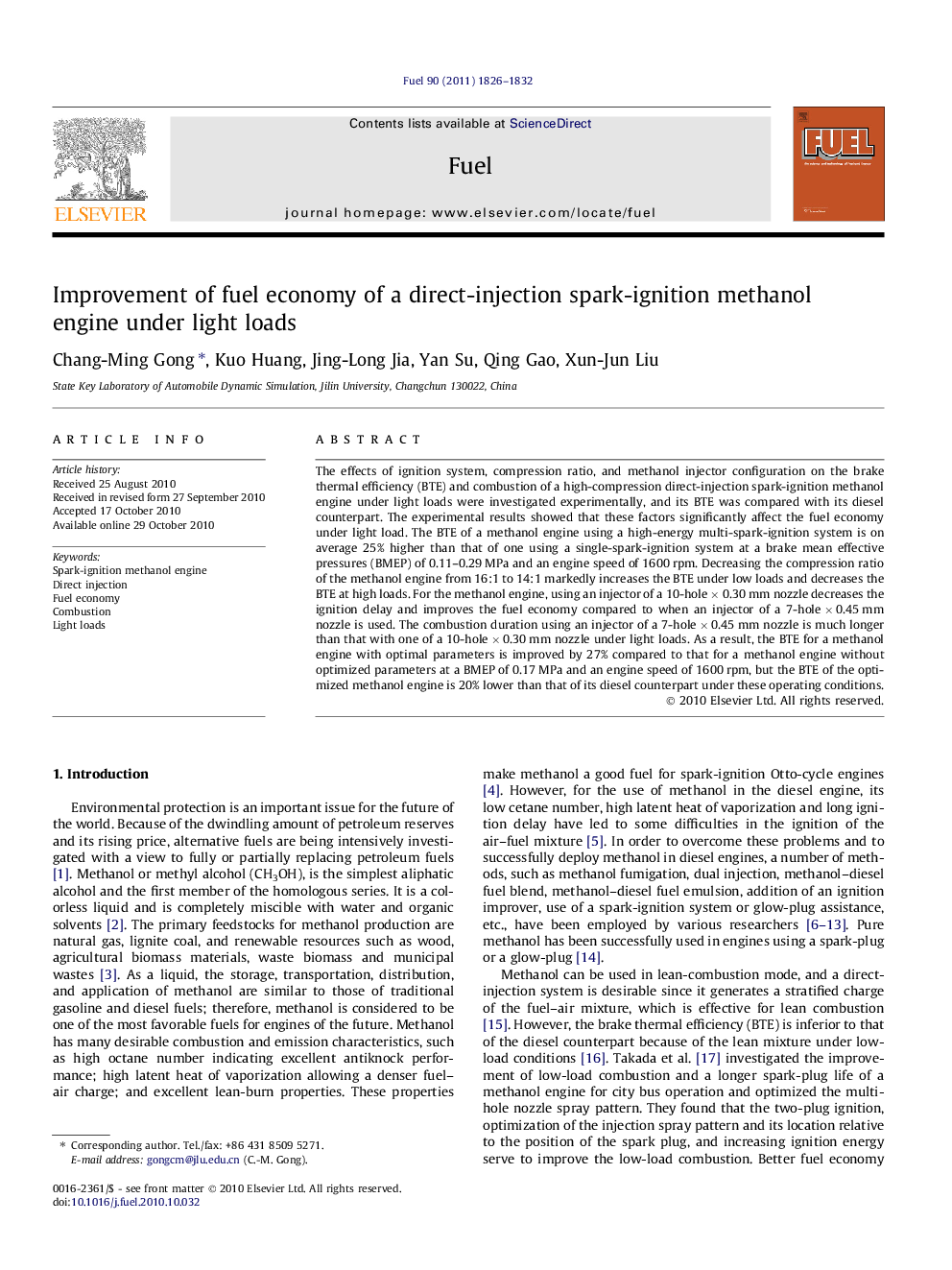| Article ID | Journal | Published Year | Pages | File Type |
|---|---|---|---|---|
| 206754 | Fuel | 2011 | 7 Pages |
The effects of ignition system, compression ratio, and methanol injector configuration on the brake thermal efficiency (BTE) and combustion of a high-compression direct-injection spark-ignition methanol engine under light loads were investigated experimentally, and its BTE was compared with its diesel counterpart. The experimental results showed that these factors significantly affect the fuel economy under light load. The BTE of a methanol engine using a high-energy multi-spark-ignition system is on average 25% higher than that of one using a single-spark-ignition system at a brake mean effective pressures (BMEP) of 0.11–0.29 MPa and an engine speed of 1600 rpm. Decreasing the compression ratio of the methanol engine from 16:1 to 14:1 markedly increases the BTE under low loads and decreases the BTE at high loads. For the methanol engine, using an injector of a 10-hole × 0.30 mm nozzle decreases the ignition delay and improves the fuel economy compared to when an injector of a 7-hole × 0.45 mm nozzle is used. The combustion duration using an injector of a 7-hole × 0.45 mm nozzle is much longer than that with one of a 10-hole × 0.30 mm nozzle under light loads. As a result, the BTE for a methanol engine with optimal parameters is improved by 27% compared to that for a methanol engine without optimized parameters at a BMEP of 0.17 MPa and an engine speed of 1600 rpm, but the BTE of the optimized methanol engine is 20% lower than that of its diesel counterpart under these operating conditions.
